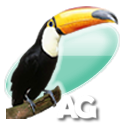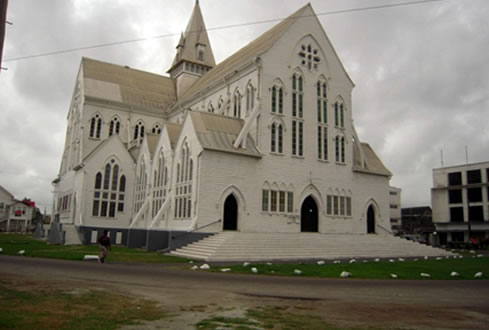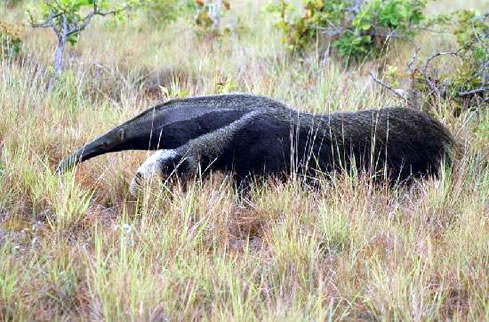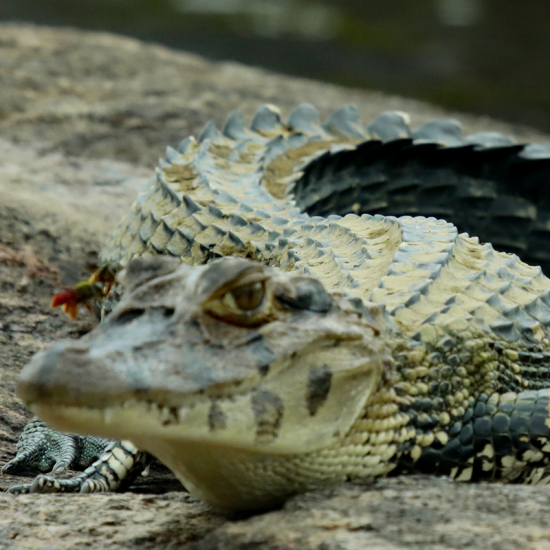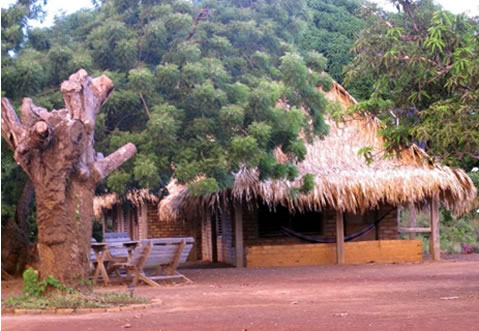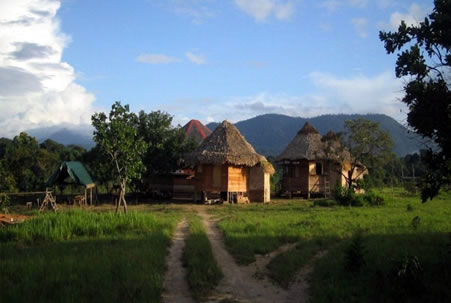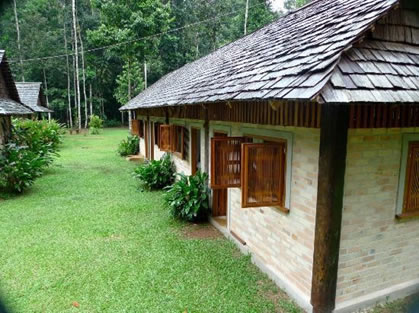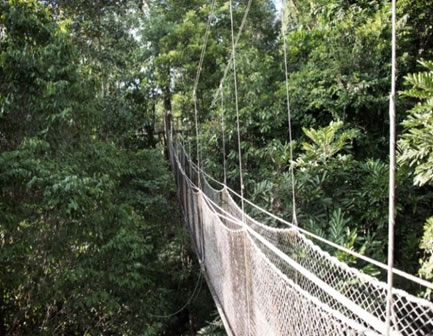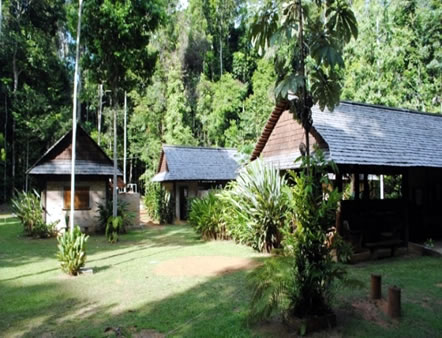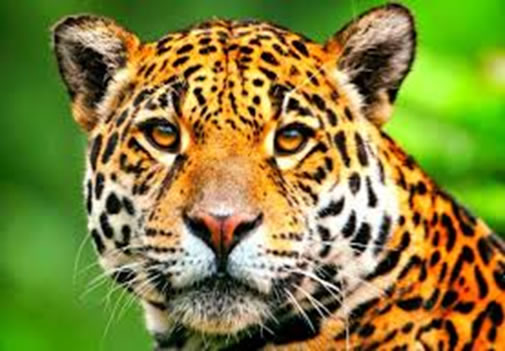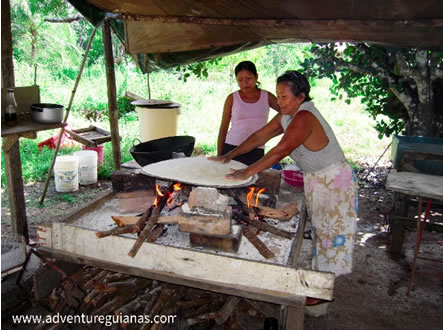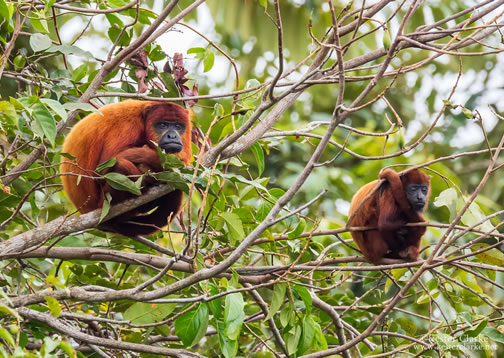Guyana Naturally
$4895 per person
“Guyana Naturally” is the ultimate eco-tourism package, combining Guyana’s premier tourist destinations, wild life habitats and Indigenous Culture, with its tropical rainforest, wetlands and Savannahs. It entails 4*4 driving, hiking, canoeing, fishing and experiencing the Amerindian way of life. If you are a nature and adventure enthusiast, then look no further! This itinerary is also ideal for photographers, both amateur and professional.
Whilst every effort would be made to assist, entry requirements (Visitors Visas) are the sole responsibility of Clients.
Terms and conditions of payments: 75% as deposit on reservation, 25% due 3 days before commencement of tour.
Download and print -:- Guyana Naturally Itinerary.
Minimum Group Size -:- 2 Persons.
Included:
-
- Arrival and departure transfers
- Domestic flights
- All accommodation
- Services of English speaking guides – please note that you will have a different guide in each place on the itinerary, rather than the same guide throughout the trip
- Meals as listed (B – Breakfast, L – Lunch, D – Dinner)
- Entrance fees for sites listed as part of the itinerary
Excluded:
-
- International flights
- Any airport taxes
- Travel Insurance
- Visas
- Drinks
Day 1: Arrival Guyana
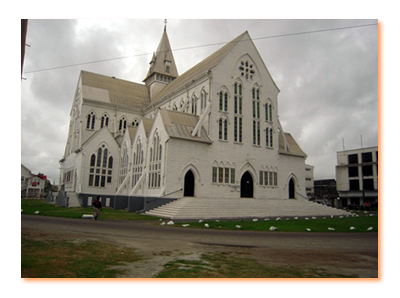
Day 2: Historic Georgetown & Lethem, Guyana/Brazil Frontier
Experience Guyana’s 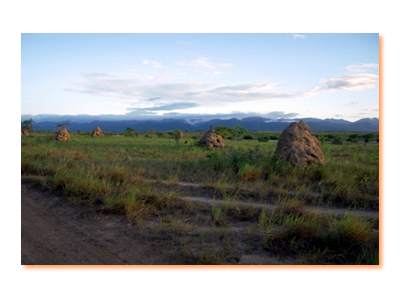 Historic Landmarks, Colonial Architecture dating back to the Seventeenth Century, and its pluralistic, ethnically, racially and religiously diverse peoples, referred to as the “Melting Pot” of the Caribbean. The City tour is by vehicle and foot and takes between two to three hours. Take mid- afternoon flight across Guyana’s Pristine Rainforest and the North Rupununi Savannahs, and we arrive at the Guyana/Brazil Border Township of Lethem, located in the Upper Takutu-Upper Essequibo Region of Guyana. Lethem is considered the capital of Region 9 and is a hub linking many of the surrounding Indigenous Villages with Georgetown and Boa Vista, the nearest town in Brazil. It is named after Sir Gordon James Lethem, who was the Governor of British Guiana from 1941 to 12 April 1947. The
Historic Landmarks, Colonial Architecture dating back to the Seventeenth Century, and its pluralistic, ethnically, racially and religiously diverse peoples, referred to as the “Melting Pot” of the Caribbean. The City tour is by vehicle and foot and takes between two to three hours. Take mid- afternoon flight across Guyana’s Pristine Rainforest and the North Rupununi Savannahs, and we arrive at the Guyana/Brazil Border Township of Lethem, located in the Upper Takutu-Upper Essequibo Region of Guyana. Lethem is considered the capital of Region 9 and is a hub linking many of the surrounding Indigenous Villages with Georgetown and Boa Vista, the nearest town in Brazil. It is named after Sir Gordon James Lethem, who was the Governor of British Guiana from 1941 to 12 April 1947. The 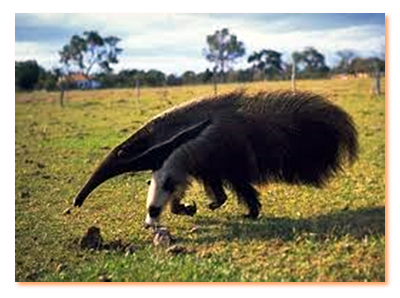 Rupununi Savannah is to Guyana what the Gran Sabana is to Venezuela, an extensive area of grassland with termite mounds and scattered or riparian woodland. It differs in that much of it is devoted to cattle rearing. The birdlife here is markedly difference from that of the rainforest. Overnight Adventure Guianas Hotel & Courtyard (BLD).
Rupununi Savannah is to Guyana what the Gran Sabana is to Venezuela, an extensive area of grassland with termite mounds and scattered or riparian woodland. It differs in that much of it is devoted to cattle rearing. The birdlife here is markedly difference from that of the rainforest. Overnight Adventure Guianas Hotel & Courtyard (BLD).
Day 3: Caiman House, Yupukari Amerindian Village
After breakfast, we drive north into the Rupununi Savannahs, passing giant  anthills onto Yupukari Village. Visitors may have the opportunity to meet local craftspeople, including the furniture builders at Yupukari Crafters, a non-profit venture to create village jobs and generate income to sustain educational development during an introductory tour of the Village. Tonight enjoy a foray on the Rupununi River from Caiman House Field Station. As a guest you have the unique opportunity to support and participate in an ongoing field study of the Black Caiman (melanosuchus niger), the largest member of the alligator family and an endangered species. Guests will observe the capture from a separate boat, but will be offered the opportunity to assist in data collection. Caiman are weighed, measured, sexed and tagged before being released back into the river. The research has already discovered interesting information on caimans’ nests that was previously unknown. During periods of high water it is difficult to capture Caiman so you will have another chance to enter the nocturnal world of the Rupununi River and associated gallery forests which
anthills onto Yupukari Village. Visitors may have the opportunity to meet local craftspeople, including the furniture builders at Yupukari Crafters, a non-profit venture to create village jobs and generate income to sustain educational development during an introductory tour of the Village. Tonight enjoy a foray on the Rupununi River from Caiman House Field Station. As a guest you have the unique opportunity to support and participate in an ongoing field study of the Black Caiman (melanosuchus niger), the largest member of the alligator family and an endangered species. Guests will observe the capture from a separate boat, but will be offered the opportunity to assist in data collection. Caiman are weighed, measured, sexed and tagged before being released back into the river. The research has already discovered interesting information on caimans’ nests that was previously unknown. During periods of high water it is difficult to capture Caiman so you will have another chance to enter the nocturnal world of the Rupununi River and associated gallery forests which 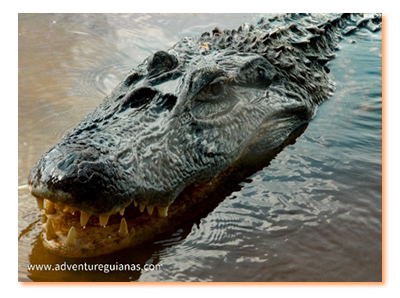 offer an experience, and world of wildlife entirely different than those viewed on a day trip. Skilled guides will expertly escort visitors to meet elusive denizens of darkness by outboard powered boats, while interpreting the sights, and sounds of Guyana after dark. Just after darkness settles on the River many creatures emerge such as black caiman (to over 12 feet), spectacled caiman, tree boas, iguanas, frogs, and many fish species( i.e arrawana, piranha). Sleeping birds (kingfishers, small perching birds) nightjars, potoos, Boat-billed Herons and other aquatic birds, bats, (harmless) spiders, insects, moths, and more can be closely approached in way not possible during the hours of light. Less likely, but not rare inclusions for night viewing include possums, tree dwelling rodents, capybara and sleeping monkeys (esp. squirrel monkeys) amongst other mammals. Few nights pass without some unusual offering. Overnight Caiman House (BLD) .
offer an experience, and world of wildlife entirely different than those viewed on a day trip. Skilled guides will expertly escort visitors to meet elusive denizens of darkness by outboard powered boats, while interpreting the sights, and sounds of Guyana after dark. Just after darkness settles on the River many creatures emerge such as black caiman (to over 12 feet), spectacled caiman, tree boas, iguanas, frogs, and many fish species( i.e arrawana, piranha). Sleeping birds (kingfishers, small perching birds) nightjars, potoos, Boat-billed Herons and other aquatic birds, bats, (harmless) spiders, insects, moths, and more can be closely approached in way not possible during the hours of light. Less likely, but not rare inclusions for night viewing include possums, tree dwelling rodents, capybara and sleeping monkeys (esp. squirrel monkeys) amongst other mammals. Few nights pass without some unusual offering. Overnight Caiman House (BLD) .
Day 4: Karanambu Lodge:
This morning, we set off on the Rupununi River to Karanambu Lodge. Depending on the river level, this trip offers an excellent opportunity to look for Giant Otters as there are several family groups which live along this stretch of the Rupununi River. The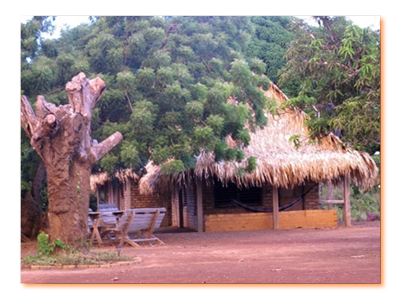 journey ends at Karanambu Lodge, the home of late Diane McTurk, widely known for her work in rehabilitating orphaned, giant river otters. Diane and her otters have appeared on National Geographic, Jeff Corwin Experience, Really Wild Show (BBC) and the Calgary’s “Zoo World”. Karanambu has a long history of visiting naturalists and Diane’s father, Tiny McTurk, has welcomed David Attenborough and Gerald Durrell (Three Singles to Adventure). Late in the afternoon we will travel by boat to look for wild Giant River Otters and as dusk falls to the ponds to see the giant Victoria Regis waterlily, bloom at dusk. On the return trip we will spotlight for Black Caiman and birds and creatures of the night. Overnight at Karanambu Lodge (BLD).
journey ends at Karanambu Lodge, the home of late Diane McTurk, widely known for her work in rehabilitating orphaned, giant river otters. Diane and her otters have appeared on National Geographic, Jeff Corwin Experience, Really Wild Show (BBC) and the Calgary’s “Zoo World”. Karanambu has a long history of visiting naturalists and Diane’s father, Tiny McTurk, has welcomed David Attenborough and Gerald Durrell (Three Singles to Adventure). Late in the afternoon we will travel by boat to look for wild Giant River Otters and as dusk falls to the ponds to see the giant Victoria Regis waterlily, bloom at dusk. On the return trip we will spotlight for Black Caiman and birds and creatures of the night. Overnight at Karanambu Lodge (BLD).
Day 5: Surama Amerindian Village
This 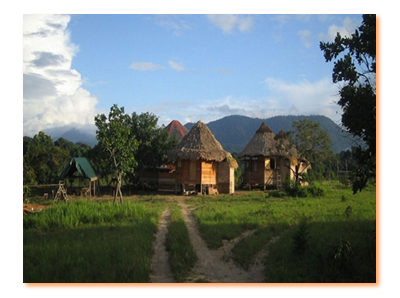 morning travel out onto the savannah to search for a Giant Anteater, and other wildlife around the environs of the Lodge. Return to the Lodge and continue by boat to Gennip Landing. Explore the gallery forest along the river where we’ll hope to find such species as Spotted Puffbird, Striped Woodcreeper, Pale-bellied Tyrant-Manakin, Golden-spangled Piculet, Bearded Tachuri and Capuchinbird. A feature bird for the area is Agami Heron. The river trip also presents another opportunity to see the wild Giant River Otters, Black Caiman, Arapaima etc whilst being transferred to Surama Amerindian Village. The village of Surama is situated in a small savannah, deep in the rainforest and surrounded by forest clad hills. It was here that Charles Waterton passed through in 1812 in search of the secrets of the useful Wourali poison known as
morning travel out onto the savannah to search for a Giant Anteater, and other wildlife around the environs of the Lodge. Return to the Lodge and continue by boat to Gennip Landing. Explore the gallery forest along the river where we’ll hope to find such species as Spotted Puffbird, Striped Woodcreeper, Pale-bellied Tyrant-Manakin, Golden-spangled Piculet, Bearded Tachuri and Capuchinbird. A feature bird for the area is Agami Heron. The river trip also presents another opportunity to see the wild Giant River Otters, Black Caiman, Arapaima etc whilst being transferred to Surama Amerindian Village. The village of Surama is situated in a small savannah, deep in the rainforest and surrounded by forest clad hills. It was here that Charles Waterton passed through in 1812 in search of the secrets of the useful Wourali poison known as
 Curare. Waterton was so stunned by this spot that he wrote in his memoirs “The finest park that England boasts falls short of this delightful scene”. Surama’s inhabitants are mainly from the Macushi tribe and still observe many of the traditional practices of their forebears. On our arrival, we will receive a warm welcome from the local people and will be shown to our basic accommodation. Your guide will take you on a tour of the village. Visit the local school, medical centre and church along with some of the village houses. As the afternoon cools a local guide will escort you for a short walk on trails to observe the forest and bird life. See the forest through the eyes of your indigenous guide and learn about the medicinal plants and their uses in the Amerindian culture. Tonight enjoy an educational walk to observe wildlife and experience the mystique of the forest after dark. Overnight Surama Eco-Lodge (BLD).
Curare. Waterton was so stunned by this spot that he wrote in his memoirs “The finest park that England boasts falls short of this delightful scene”. Surama’s inhabitants are mainly from the Macushi tribe and still observe many of the traditional practices of their forebears. On our arrival, we will receive a warm welcome from the local people and will be shown to our basic accommodation. Your guide will take you on a tour of the village. Visit the local school, medical centre and church along with some of the village houses. As the afternoon cools a local guide will escort you for a short walk on trails to observe the forest and bird life. See the forest through the eyes of your indigenous guide and learn about the medicinal plants and their uses in the Amerindian culture. Tonight enjoy an educational walk to observe wildlife and experience the mystique of the forest after dark. Overnight Surama Eco-Lodge (BLD). Day 6: Surama Mt Hike & Burro Burro River Tour
Rise before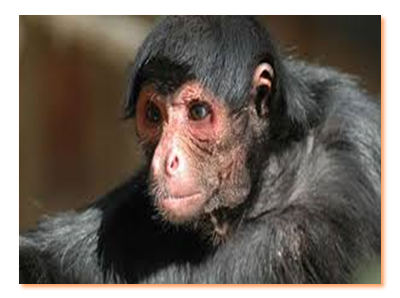 dawn for a walk across the savannah and then the exhilarating climb up Surama Mountain in the cool morning air. This is the best time to observe bird life along the trail. Breakfast will be served at a lookout point which affords incredible views across the village and savannah to the Pakaraima Mountains. Return to village for lunch and then take a three mile walk across the savannah and through the rainforest to the Burro Burro River. Your guides will then paddle you on the Burro Burro River for opportunities to observe Giant River Otters, Tapir, Tira, Spider Monkeys and many more species. Return to village for sunset. Overnight at Surama Eco Lodge (BLD).
dawn for a walk across the savannah and then the exhilarating climb up Surama Mountain in the cool morning air. This is the best time to observe bird life along the trail. Breakfast will be served at a lookout point which affords incredible views across the village and savannah to the Pakaraima Mountains. Return to village for lunch and then take a three mile walk across the savannah and through the rainforest to the Burro Burro River. Your guides will then paddle you on the Burro Burro River for opportunities to observe Giant River Otters, Tapir, Tira, Spider Monkeys and many more species. Return to village for sunset. Overnight at Surama Eco Lodge (BLD).
Day 7: Rewa Amerindian Village
After 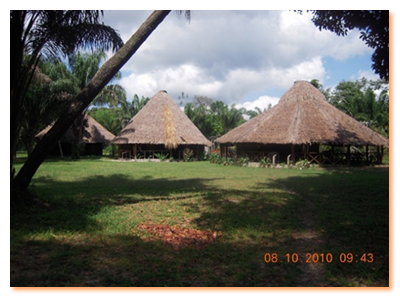 breakfast drive to Kwatamang Landing on the Rupununi River and continue by boat approximately 50 miles to Rewa Amerindian Village. The Village of mostly Macuchi and Wapishana Indians, is located on the confluence of the Rewa and Rupununi Rivers. Depending on the water level, the journey can take between two to four hours and offers an ideal opportunity to see the Giant Otters, Caimans, Capybaras and myriad bird species.
In 2005/2006 the Village constructed the first set of Benabs, overlooking the Rewa and Rupununi Rivers, and established a sustainable eco-tourism business, self-owned and operated.
Today, accommodation has improved with additional Lodges, despite being relatively unknown and unfrequented. This afternoon, our Guide will take you on a Village Tour, where traditional customs are practices are very much alive. Experience cassava grating, farine (local staple) making, weaving etc: Overnight Rewa Eco Lodge (BLD).
breakfast drive to Kwatamang Landing on the Rupununi River and continue by boat approximately 50 miles to Rewa Amerindian Village. The Village of mostly Macuchi and Wapishana Indians, is located on the confluence of the Rewa and Rupununi Rivers. Depending on the water level, the journey can take between two to four hours and offers an ideal opportunity to see the Giant Otters, Caimans, Capybaras and myriad bird species.
In 2005/2006 the Village constructed the first set of Benabs, overlooking the Rewa and Rupununi Rivers, and established a sustainable eco-tourism business, self-owned and operated.
Today, accommodation has improved with additional Lodges, despite being relatively unknown and unfrequented. This afternoon, our Guide will take you on a Village Tour, where traditional customs are practices are very much alive. Experience cassava grating, farine (local staple) making, weaving etc: Overnight Rewa Eco Lodge (BLD).
Day 8: Rewa Amerindian Village
After 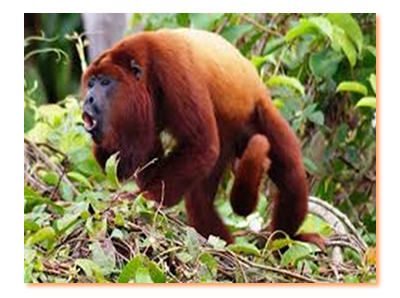 breakfast, head out to the Rupununi River for a gradual hike, except for a few steep areas, up the Awarmie Mountain. Along the trail, there is chance to see a few specie ofprimates, lots of birds etc. The summit presents a good opportunity to view the nearby Mountain Ranges, and possibly, sighting of the Red Howler Monkeys, that you would have heard along the way. Return to the Lodge for lunch. After lunch travel up the Rewa River to “Sea Wall” which is named after a rock formation and is ideal for fishing (maybe some peacock bass for dinner). Here is also home to the largest scaled fresh-water fish, the Arapaima. Return to the Lodge before dark, and be sure to keep an eye out for River Turtles, Caimans, Capybaras that frequent this water shed. Overnight Rewa Eco Lodge (BLD).
breakfast, head out to the Rupununi River for a gradual hike, except for a few steep areas, up the Awarmie Mountain. Along the trail, there is chance to see a few specie ofprimates, lots of birds etc. The summit presents a good opportunity to view the nearby Mountain Ranges, and possibly, sighting of the Red Howler Monkeys, that you would have heard along the way. Return to the Lodge for lunch. After lunch travel up the Rewa River to “Sea Wall” which is named after a rock formation and is ideal for fishing (maybe some peacock bass for dinner). Here is also home to the largest scaled fresh-water fish, the Arapaima. Return to the Lodge before dark, and be sure to keep an eye out for River Turtles, Caimans, Capybaras that frequent this water shed. Overnight Rewa Eco Lodge (BLD).
Day 9: Canopy Walkway & Atta Rainforest Lodge
After breakfast, return by boat to 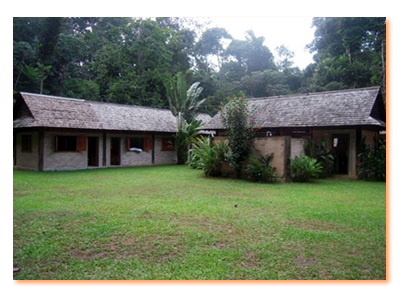 Quatermang Landing via the Rupununi River and continue by vehicle to a trail in the Iwokrama Forest to hopefully see the amazingly brilliant Guianian Cock-of-the-rock and even the elusive Jaguar. The Iwokrama forest is rapidly gaining an international reputation for its healthy jaguar populations that seem not to be troubled by the appearance of curious humans. No promises, but many have been lucky! Along the road, we will watch for the myriad of bird species that frequent the forest edge. The journey concludes at the Iwokrama Canopy Walkway where we can bird watch from the vantage of 30 Metres up in the canopy. Painted Parakeet, Rufous-throated Sapphire, Guianan Puffbird, Green Aracari, Waved Woodpecker, Pygmy Antwren, Guianan Streaked-Antwren, Dusky Purpletuft, Purple-breasted Cotinga, Guianan Toucanet, Pompadour Cotinga, Buff-cheeked Greenlet, Caica Parrots, and a host of crown
Quatermang Landing via the Rupununi River and continue by vehicle to a trail in the Iwokrama Forest to hopefully see the amazingly brilliant Guianian Cock-of-the-rock and even the elusive Jaguar. The Iwokrama forest is rapidly gaining an international reputation for its healthy jaguar populations that seem not to be troubled by the appearance of curious humans. No promises, but many have been lucky! Along the road, we will watch for the myriad of bird species that frequent the forest edge. The journey concludes at the Iwokrama Canopy Walkway where we can bird watch from the vantage of 30 Metres up in the canopy. Painted Parakeet, Rufous-throated Sapphire, Guianan Puffbird, Green Aracari, Waved Woodpecker, Pygmy Antwren, Guianan Streaked-Antwren, Dusky Purpletuft, Purple-breasted Cotinga, Guianan Toucanet, Pompadour Cotinga, Buff-cheeked Greenlet, Caica Parrots, and a host of crown 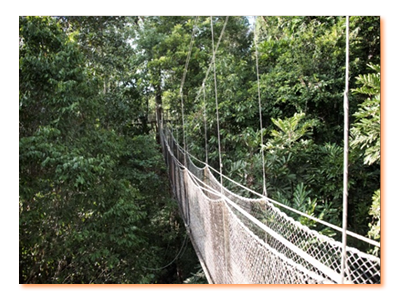 specialists may come within our view. From this tree top vantage you can sometimes see Red Howler Monkeys and Black Spider Monkeys. The trails also have an interpretative walk with the trees named and you can learn about their varied uses in the Macushi culture. Deer and agouti are also regular visitors to the lodge. As dark falls on the Canopy Walkway, we will hope to see the White-winged Potoo. Overnight at Atta Rainforest Lodge (BLD).
specialists may come within our view. From this tree top vantage you can sometimes see Red Howler Monkeys and Black Spider Monkeys. The trails also have an interpretative walk with the trees named and you can learn about their varied uses in the Macushi culture. Deer and agouti are also regular visitors to the lodge. As dark falls on the Canopy Walkway, we will hope to see the White-winged Potoo. Overnight at Atta Rainforest Lodge (BLD).
Day 10: Iwokrama River Lodge
Although the forest around Atta Lodge is excellent for birds, the major attraction here is a 154 metre long canopy walkway which is only 750m from the lodge. The walkway has four platforms, the highest of which is over 30 metres above the ground, and these will allow us to get great looks at a range of canopy species, many of which we would struggle to see well from the forest floor. After lunch travel by vehicle to the Iwokrama Field station and River Lodge. Traffic is only very occasional and wildlife is often seen along the road, such as Agouti, Tayra, Puma, Tapir and Black Curassow. Overnight Iwokrama River Lodge (BLD).
Day 11: Turtle Mt Hike & Adventure Guianas Piraiba Lodge
After 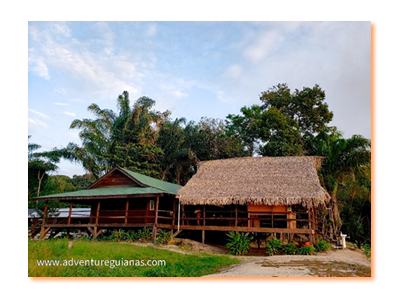 breakfast, you will leave the river lodge for the journey to Turtle Mountain, and an exhilarating climb up the mountain to its summit at 935ft (approx. 360m). It takes 1 3/4hrs to walk up the mountain, but the effort is more than worth it for the breathtaking views over the forest canopy when you get there and chances of Green Aracari, White Bellbird or a fly-by of one of five types of Eagles. This trail is also a great location for seeing Black Spider Monkey and Red Howler Monkey and if we are very lucky even a Jaguar. This pristine forest offers huge buttress trees and the endemic Greenheart, a highly sought after hardwood. Return to the River Lodge for lunch and continue by boat deep into the jungles of Guyana. The boat ride ends at Adventure Guianas Piraiba Lodge, which is situated on the Eastern Bank of the Essequibo River, deep into the Jungles of Guyana. Piraiba Lodge offer guests a mixture of comfort and rusticity, surrounded by pristine rainforest, full of wildlife. Named after the largest freshwater cat fish specie of South America, the Piraiba or Lau Lau, the Lodge is constructed primarily from one of our finest and most durable of wood specie-the Green Heart. This evening we would do a bit of fishing whilst observing the several species of macaws, toucans etc returning to their habitats to sleep. After dark, we’ll set out on the river, in hopes of finding the Black Caiman or another of its four species, and listen for night birds such as Spectacled Owl, White-winged Potoo, Rufous Potoo, Long-tailed Potoo, Zigzag Heron or Blackish Night Jar and one or another of the four species of caiman -Overnight AG Piraiba Lodge (BLD).
breakfast, you will leave the river lodge for the journey to Turtle Mountain, and an exhilarating climb up the mountain to its summit at 935ft (approx. 360m). It takes 1 3/4hrs to walk up the mountain, but the effort is more than worth it for the breathtaking views over the forest canopy when you get there and chances of Green Aracari, White Bellbird or a fly-by of one of five types of Eagles. This trail is also a great location for seeing Black Spider Monkey and Red Howler Monkey and if we are very lucky even a Jaguar. This pristine forest offers huge buttress trees and the endemic Greenheart, a highly sought after hardwood. Return to the River Lodge for lunch and continue by boat deep into the jungles of Guyana. The boat ride ends at Adventure Guianas Piraiba Lodge, which is situated on the Eastern Bank of the Essequibo River, deep into the Jungles of Guyana. Piraiba Lodge offer guests a mixture of comfort and rusticity, surrounded by pristine rainforest, full of wildlife. Named after the largest freshwater cat fish specie of South America, the Piraiba or Lau Lau, the Lodge is constructed primarily from one of our finest and most durable of wood specie-the Green Heart. This evening we would do a bit of fishing whilst observing the several species of macaws, toucans etc returning to their habitats to sleep. After dark, we’ll set out on the river, in hopes of finding the Black Caiman or another of its four species, and listen for night birds such as Spectacled Owl, White-winged Potoo, Rufous Potoo, Long-tailed Potoo, Zigzag Heron or Blackish Night Jar and one or another of the four species of caiman -Overnight AG Piraiba Lodge (BLD).
Day 12: Adventure Guianas Piraiba Lodge
This morning we would set out on a boat ride further up the mighty Essequibo River, amidst lots of birdlife, hoping to see the Capybara, Giant Otter, Tapir, Primates (common are the Red Howler, Spider, Capuchins & Squirrel Monkeys) and even the elusive Jaguar, maybe feasting on a Giant River Turtle or Arapaima or just swimming from one bank to the other. After lunch we will take a guided walk through one of our nature trails, hoping to see the Gray Brocket Deer and other wildlife. Before dark observe the Toucans, Ospreys, Muscovy Ducks, Anhinga’s etc making their way to their respective resting spots-Overnight AG Piraiba Lodge (BLD).
Day 13: Return to Georgetown
Our boat will take you to Fairview Village for your mid- morning flight to E.F Correia International Airport, where our personnel will pick you up and take you to your Hotel in Georgetown: Free afternoon to self-explore Georgetown: Overnight Hotel.
Day 14: Kaieteur Falls
Experience Guyana’s 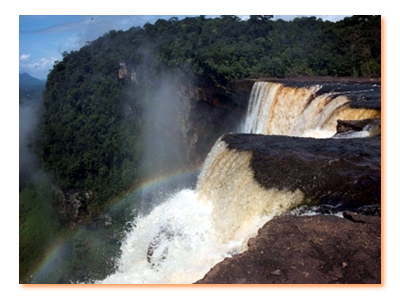 Crown Jewel-The majestic Kaieteur Falls. Take a 1 hour flight across Guyana’s pristine rainforest to Kaieteur Falls (World’s Largest Single Drop Water Falls). Kaieteur is nearly five times the height of Niagara Falls. Here we hope to find White-chinned and White-tipped Swifts swirling over the gorge, and the astonishingly colorful Guianan Cock-of-the-Rock; Return to Ogle Airport by aircraft and transfer to Georgetown: Overnight Hotel (B).
Crown Jewel-The majestic Kaieteur Falls. Take a 1 hour flight across Guyana’s pristine rainforest to Kaieteur Falls (World’s Largest Single Drop Water Falls). Kaieteur is nearly five times the height of Niagara Falls. Here we hope to find White-chinned and White-tipped Swifts swirling over the gorge, and the astonishingly colorful Guianan Cock-of-the-Rock; Return to Ogle Airport by aircraft and transfer to Georgetown: Overnight Hotel (B).
Note: The tour to Kaieteur can sometimes be done at the beginning trip depending on availability etc or sometimes has to be rescheduled due to inclement weather or insufficient passengers
